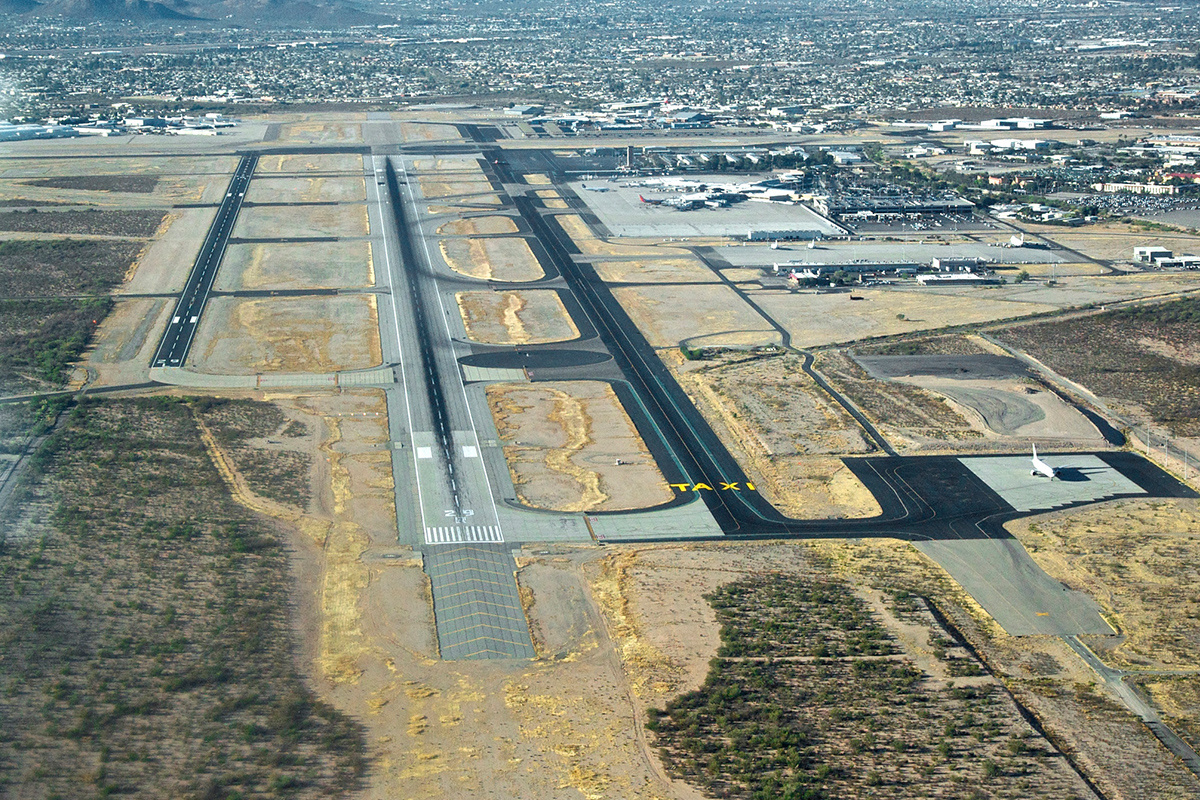
Pollution From Air Force Keeps Causing Cancer in Tucson, Residents Say

The Tucson International Airport Area Superfund Site, shown here in 2012, was listed by the EPA in 1983. Luis Jou García / Flickr
Twenty-seven years ago, 1,600 residents of Tucson, Arizona’s south side settled an $84.5 million dollar lawsuit with Hughes Aircraft (now Raytheon Missile Systems Co.), claiming the Air Force contractor had been dumping the industrial solvent trichloroethylene (TCE) into the water table for 29 years since 1952, causing cancers and other ailments.
Now, more South Tucson residents are coming forward to claim that justice still hasn’t been served.
Within the last year, more than 1,350 South Tucsonans have filed claims with the Air Force saying they continue to suffer from illnesses caused by the drinking-water pollution its contractors used to dump into the ground surrounding the Tucson International Airport, the Associated Press reported Sunday.
The Arizona Daily Star, which reported on the story last week, did not yet know the details of the majority of cases, but spoke to residents who blame the pollution for cancers, heart disease and autoimmune disorders such as lupus, which has been linked to TCE.
Air Force spokesperson Mark Kinkade told the Star that the Air Force had not yet made a decision about any of the claims and had not yet set a timeline for doing so.
South Tucson resident and activist Linda Robles, who is organizing the filing of the claims, said that the current claims were from people who either hadn’t known about the first round of lawsuits or hadn’t been sick at the time, the Star reported.
Robles has personally experienced the devastation wrought by contaminated drinking water. She lost one daughter to lupus, and two of her other children also have the disease. Her ex-husband had a kidney tumor removed in 2016, and her granddaughter was diagnosed with kidney nephritis in 2013. The illness of her year-old granddaughter was what motivated her to say “no more” and start researching water pollution issues, she told the Star in an April 2017 article about the new round of claims.
Another claimant profiled in the most recent Star article, Carmen “Roxie” Castillo, was also motivated by the death of a friend. While she has suffered from lupus, kidney disease, migraines, chronic pain and other conditions since 1992, she finally decided to take action when her 48-year-old friend Michelle Gutierrez died of brain cancer in 2016, she told the Star.
The Environmental Protection Agency (EPA) confirmed unsafe levels of TCE in South Tucson wells in 1981. The contaminated wells were closed in the 1980s, and the city began treating the affected water in 1994. In addition to TCE, the current round of claims also focuses on 1,4-dioxane, another solvent which was discovered in Tucson’s water in 2002, the Star reported.
However, Tony Roisman, a lawyer who represented Tucson residents in the earlier round of suits, said that if the current claims develop into a lawsuit, the residents might have a harder time proving their illnesses are a result of the pollution. Since more time has passed, illness could be attributed to age, he told the Star.
While the dioxane was found in the water much more recently, Roisman said in the April 2017 Star article that it is harder to link to cancers than TCE, since the former has only been found to cause cancer in animals and is listed by the federal government as a “probable carcinogen.” TCE is listed as a known carcinogen and has been linked to cancer in human studies as well.
EPA Blocks Clean Water Rule to Replace With 'Industry-Friendly' Alternative https://t.co/18AtfOJAlU #EPA @foodandwater @Waterkeeper @350 @SierraClub @greenpeaceusa @NRDC
— EcoWatch (@EcoWatch) February 1, 2018

 233k
233k  41k
41k  Subscribe
Subscribe 